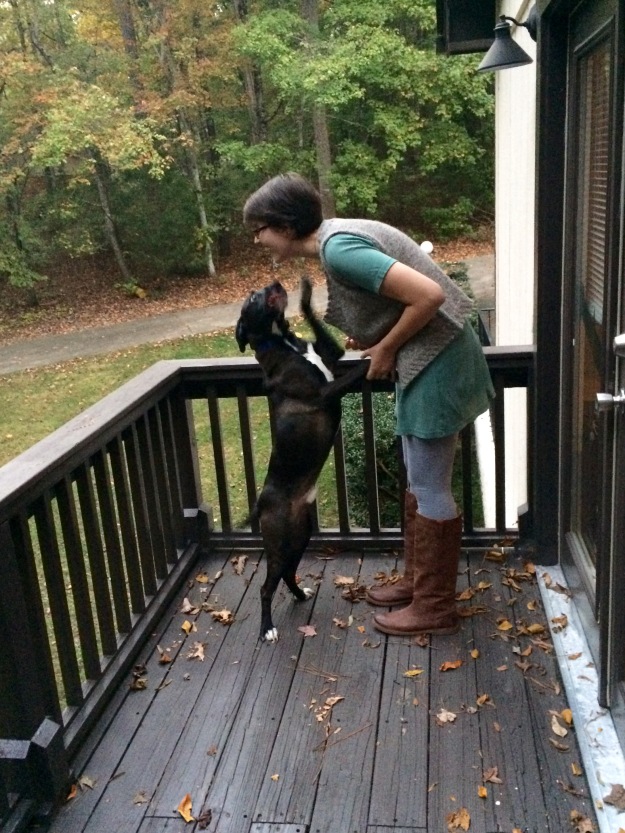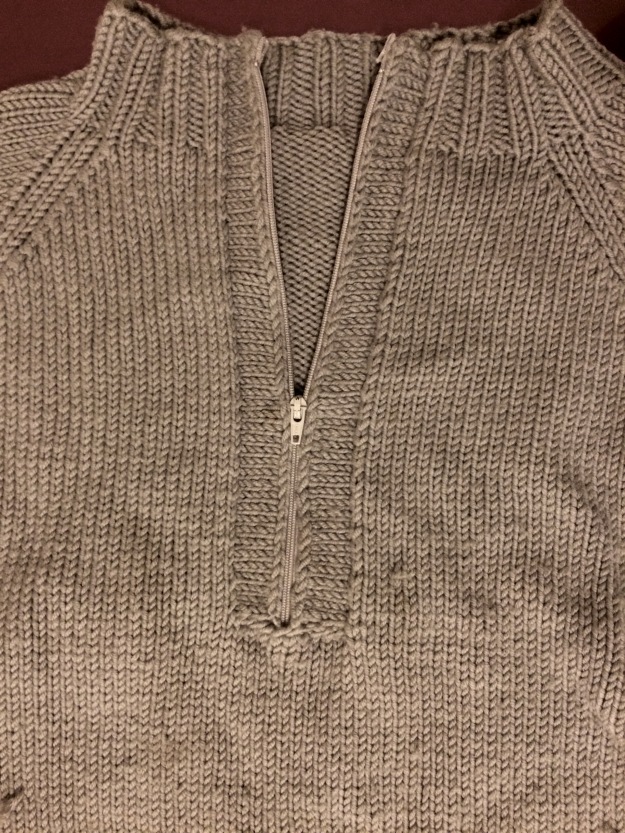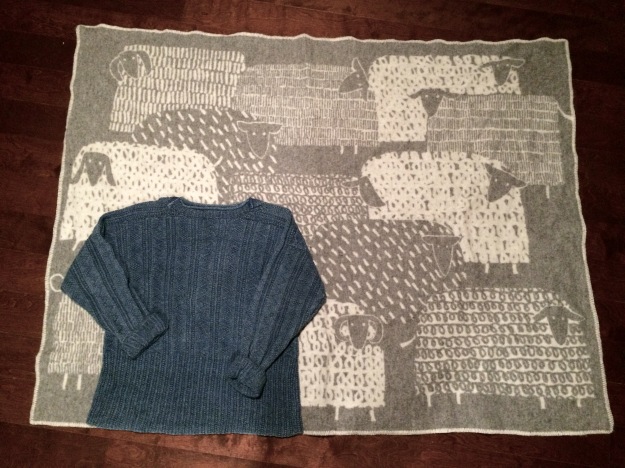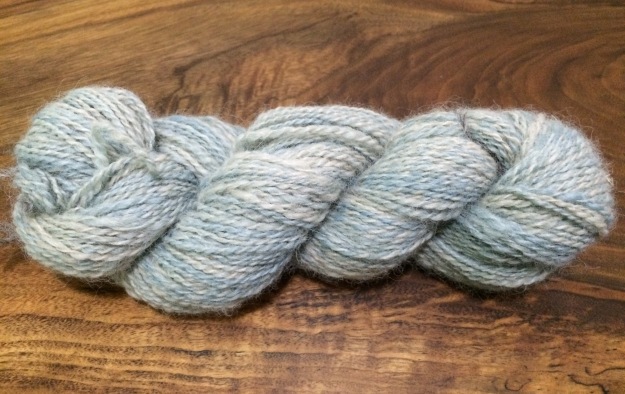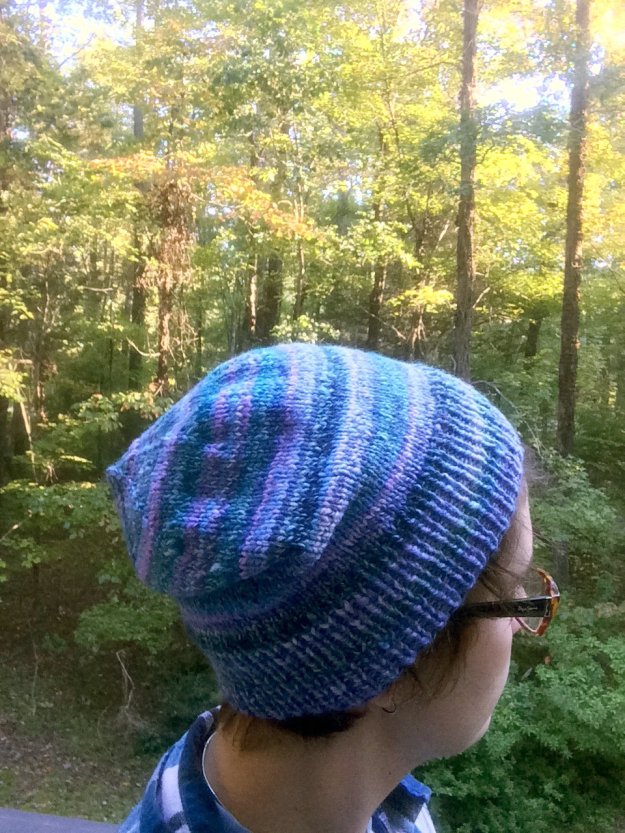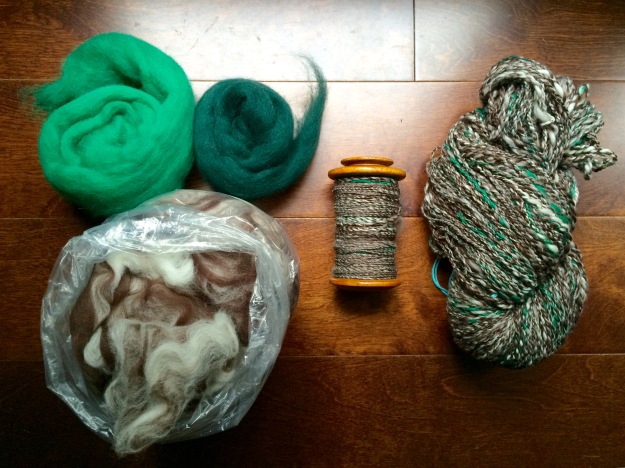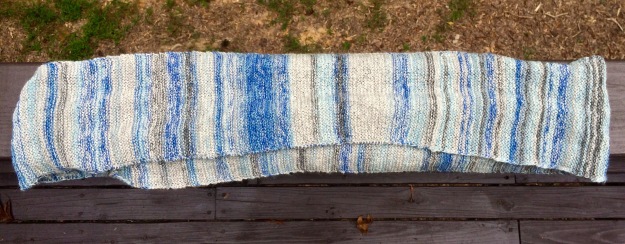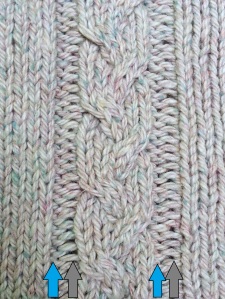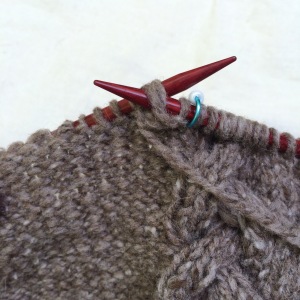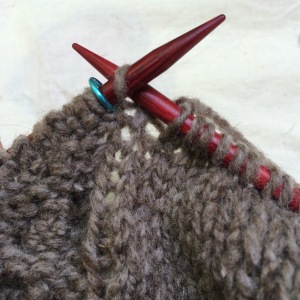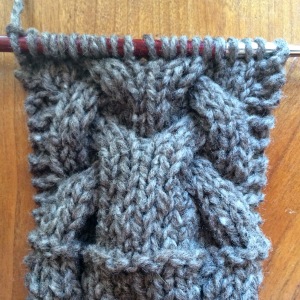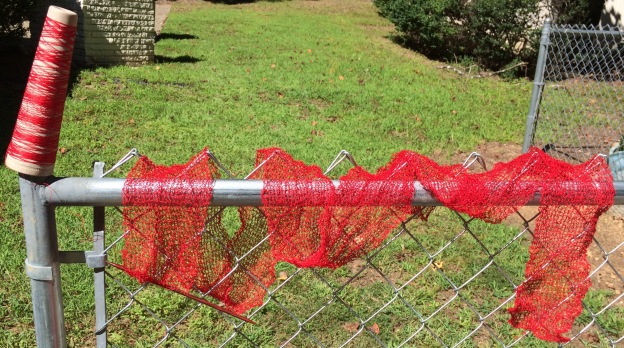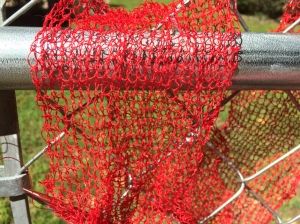Week three’s theme is loved. As I pared down my wardrobe earlier this year, I kept only things that I loved. It’s so nice to open my dresser and see things that I’ve had for years and remember things about them. My freshman year in college I lived in one small room with three other girls (one of whom I’m still really good friends with – hi Amy), and one of the moms sent us all socks when it got cold; I still have my pair. I have a ton of old t-shirts I’ll never wear again so they’re all in a hamper in the linen closet and when I finally learn how to use a sewing machine, I’ll make a quilt. I rarely have occasion to wear it, but I love the dress I bought on super sale from Eileen Fisher to wear for our wedding rehearsal. Here I am wearing the same outfit, including the shrug I finished knitting mere days before the rehearsal, a few days later on our honeymoon:
One of my proudest knitting accomplishments was sewing in this zipper for this sweater for my husband. This sweater, which is a simple bottom-up raglan pullover, was to replace one from LL Bean. The pattern had a button band, but he wanted a half zip instead. It took all evening to attach and I sewed it a little uneven so the zipper catches in one spot if you zip it too quickly. But now I can say I’ve sewn in a zipper, although I think in the future I’d just take such a thing to a tailor.
Of course now I’m working on a sweater with set in sleeves, so if I manage to do that correctly the first time I’ll be quite pleased.
This is probably the oldest hand-knit I still wear, and I wear it a lot. My aunt knitted it for me ages ago and the sleeves are too long so I always cuff them. When my sister and I were growing up, sweaters from Aunti were often a bit long so we’d grow into them. This one is tunic-length now and I love that. It’s denim so it’s very durable and even machine washable, which is a nice touch. It’s sitting on my sheep blanket, which I got in Reykjavik on our Iceland stopover on the way home from Norway last year. The blanket is great – warm but breathable and it has that comforting wool smell. AND it’s reversible, with the inverse shades on the other side. It’s usually draped over my office chair, until our cat inevitably pulls it down to sit on.
And here is my favorite dress, a gift from my aunt and uncle when I was in college, which I wear as often as I can get away with. It came from a second hand shop in Floyd, VA, where the woman buys used clothing and stamps on it. This dress has lovely faded red stamps on the front and back. In the summer I wear it with leggings and Toms or sandals, and in the winter with boots and a sweater. I bought these boots (on sale!) last winter to replace a pair I’d had since high school and worn through both the soles and lining. I’ve learned my lesson – buy leather-lined boots. The vest I’m wearing is my newly finished Sycamore, which I’ll talk more about in week five. Here’s Ajax going in for a kiss, as today I spent the afternoon planting daffodils, my favorite flower, around our property, and he missed me.